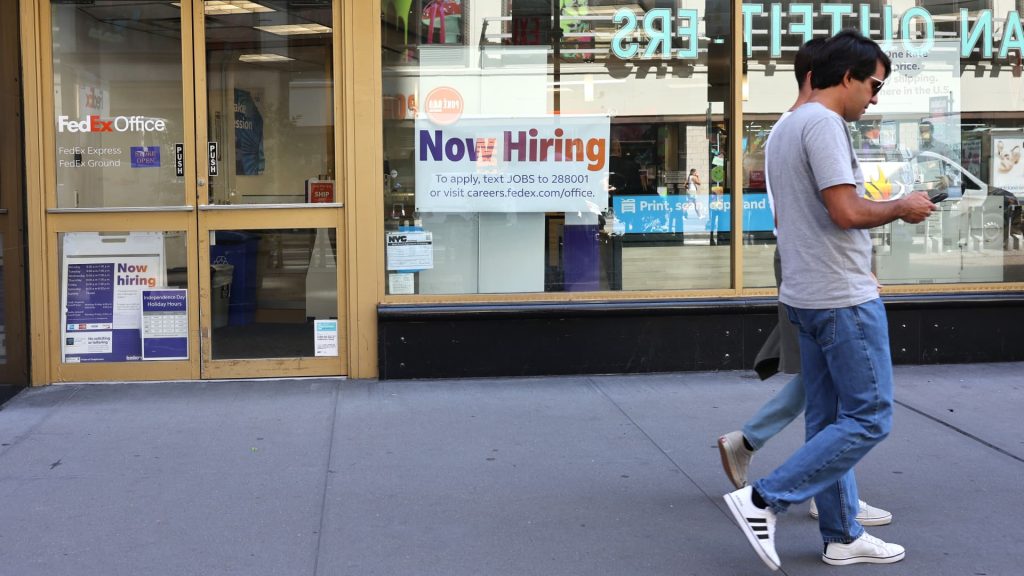Employers added 142,000 jobs in August, which was lower than expected, but an increase from the previous month. The unemployment rate also fell slightly to 4.2%. However, there are signs of “slowing momentum” in the labor market, such as average job growth being lower than in previous years and the unemployment rate steadily rising. Hiring has been slow, particularly outside of the healthcare and social assistance fields. Job openings are also at their lowest since January 2021, and workers are quitting their jobs at a low rate, indicating decreased confidence in finding new employment.
The current labor market data is not necessarily concerning or at recessionary levels yet, but it shows a considerable slowdown in momentum compared to previous years. Workers are finding it more challenging to secure new jobs, with job-finding levels similar to those in 2017. While the data is softer, it may not necessarily indicate an imminent recession, but could serve as a prelude to one. Economists are keeping an eye on the trend and monitoring if the slowdown continues to avoid potential future downturns.
Despite the slowing momentum, there is some room for optimism in the labor market. Permanent layoffs, which are typically indicators of impending recessions, have not increased significantly. Data on unemployment insurance claims and layoff rates suggest that employers are retaining their workers, indicating a level of stability in the job market. The recent rise in unemployment is due to a growing labor supply, as more Americans enter the job market and look for work.
Federal Reserve officials are expected to cut interest rates in an effort to stimulate the economy. Lower borrowing costs could encourage consumer spending on big-ticket items like homes and cars, as well as prompt businesses to make investments and hire more workers. However, the impact of these rate cuts would not be immediate and would take several months to be felt throughout the economy. Economists believe that the current state of the economy is more aligned with a soft landing rather than a recession, indicating some resilience despite the challenges faced by the labor market.
Overall, the labor market is showing signs of slowing momentum, with job growth, hiring, and job-finding rates all experiencing declines. While the data is not yet at concerning levels, economists are monitoring the situation closely to prevent a potential recession. The current levels of permanent layoffs and unemployment insurance claims provide some optimism, as they suggest employers are holding onto their workers. The upcoming interest rate cuts by the Federal Reserve are expected to provide some relief to the economy, but their impact may take time to materialize. Despite the challenges, the economy is still believed to be on track for a soft landing rather than a sharp downturn into recession.















